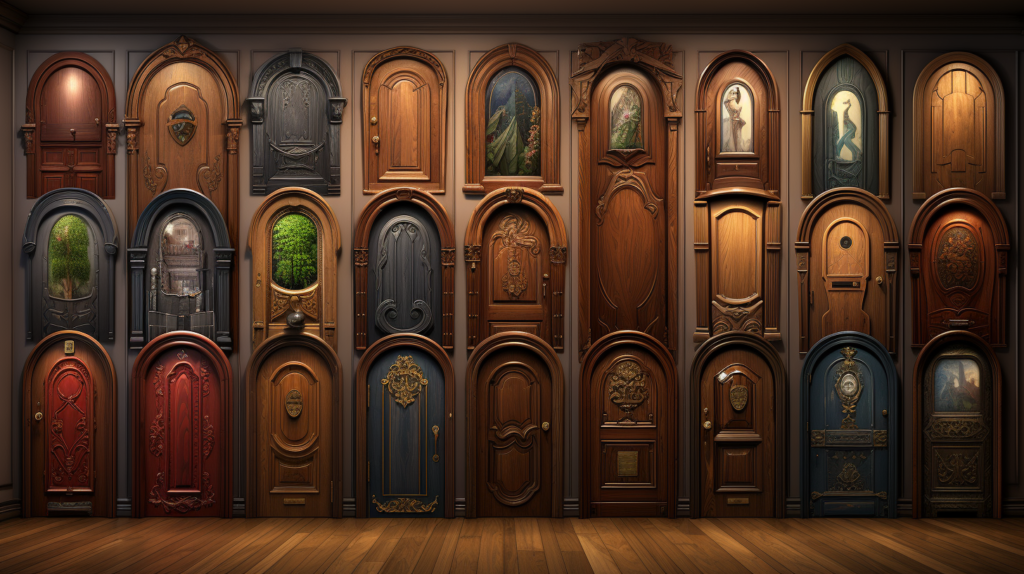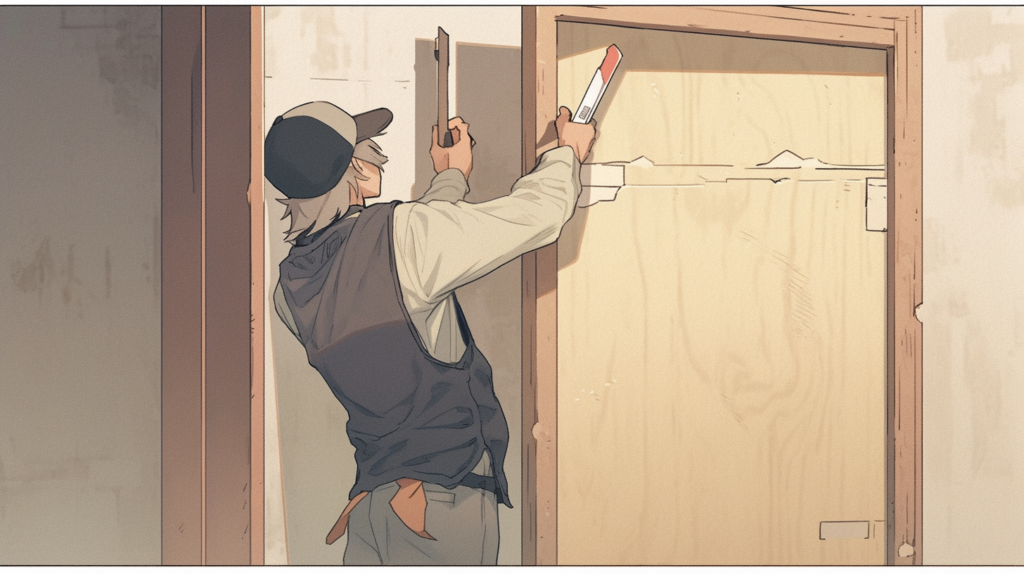Ever wondered why some doors muffle sounds better than others?
The secret lies in whether they are solid core or not. Understanding this difference is crucial for anyone aiming to create a quiet space.
We’re about to explore the science of soundproofing in doors, from STC ratings to the materials that make them tick.
Ready to learn how to keep noise at bay?
Let’s dive into the world of solid core doors and discover the keys to a quieter room.
Understanding Sound Transmission In Doors

Sound behaves much like water; just as water can seep through any gap or fissure, sound too can penetrate any opening or thin barrier with ease.
The Sound Transmission Class, or STC, is the standard by which soundproofing is measured in building materials, including doors.
It quantifies how well a partition reduces airborne sound, based on the decibel reduction of noise that the partition can provide.
A higher STC rating typically equates to a better performance in noise reduction, which is why it’s a critical metric when assessing the soundproofing quality of a door.
What Is The STC Of Hollow Core Door And STC Of A Solid Core Door?

When it comes to the STC rating of doors, hollow core doors typically fall short. With an STC rating often between 20 to 25, they provide minimal resistance to noise.
This is due to their construction, which includes a hollow space between thin veneers of wood.
On the contrary, solid core doors boast much higher STC ratings, ranging from 40 to 55, because of their dense, solid interior.
This interior may consist of wood, particleboard, or other dense materials, which are far better at absorbing and blocking sound than the hollow core door’s empty space.
What Are Solid Core Doors Made Of?

The materials that make up a solid core door are pivotal to its ability to function as a sound barrier.
Solid core doors are constructed using various materials such as solid wood, MDF (Medium-Density Fiberboard), particleboard, and even foam or cork in some cases.
Each of these materials has inherent sound-dampening properties. Solid wood, for instance, is naturally dense and has a good STC rating, making it a common choice for soundproof doors.
MDF and particleboard are engineered woods that also offer good sound absorption due to their density and composition.
The principle behind the soundproofing effectiveness of solid core doors is their density. Density increases mass, and mass is one of the critical factors in blocking sound transmission.
The dense composition of a solid core door impedes the vibrations caused by sound waves, which are the vehicle for noise.
This density absorbs the sound energy, transforming it into a negligible amount of heat, rather than allowing it to pass through.
Are Solid Core Doors More Soundproof?

Yes, Solid Core Doors reduces 75-80% more noise than hollow doors.
The materials and construction of solid core doors are specifically designed to disrupt and absorb sound waves, resulting in substantial sound attenuation.
This quality is reflected in the STC ratings, where solid core doors generally have much higher ratings compared to hollow core doors.
A hollow core door, with an STC rating of 20 to 25, allows a significant amount of noise to pass through.
In contrast, a solid core door with an STC rating between 40 to 55 can lead to a perceived reduction in noise.
Although it’s challenging to translate STC ratings to exact percentages of noise reduction, a door with an STC of 50, for instance, typically reduces noise by about 75 to 80% compared to the baseline of no door.
Therefore, when a solid core door is rated 20 to 30 points higher in STC than a hollow core door, it can substantially diminish the noise level, making conversations or activities on the other side much less audible and providing a quieter, more private environment.
Installing Solid Core Doors For Maximum Soundproofing

The installation of a door is just as crucial as its composition when it comes to soundproofing.
A poorly installed door, regardless of its STC rating, will allow sound leaks, much like a dam with a small crack can’t effectively hold back water.
It is essential that the door fits snugly into its frame without any gaps, and that it is properly sealed all around to prevent any sound leaks.
A well-installed solid core door can perform to its fullest potential and provide the expected level of sound reduction.
Sealing Gaps With Weatherstrips And Door Bottom
Completing the installation with the correct sealing elements is key to maximizing the soundproofing benefits of any door.
Weatherstripping is an effective method for sealing the perimeter of the door to prevent sound waves from entering or escaping through the gaps.
The door bottom or door shoe is equally important; it seals the gap between the door and the floor when the door is closed.
Together, these sealing solutions complement the mass and density of a solid core door, ensuring that the barrier to sound is as complete as possible.
How To Soundproof Hollow-Core Doors

Hollow-core doors, by design, are less effective at blocking sound due to their lightweight and less dense construction.
However, with a few strategic modifications, their ability to dampen sound can be markedly improved. The goal is to add mass to the door; the heavier it is, the less sound can pass through.
For anyone looking to enhance their hollow-core doors’ ability to block noise, there are a number of practical and budget-friendly solutions.
One such solution is to apply soundproofing panels. Panels made from Nitrile butadiene rubber, such as those offered by Burton Acoustix, can be directly affixed to the door’s surface.
These panels are not only effective at absorbing sound but also add the necessary mass to help dampen vibrations.
To ensure that the door becomes an effective sound barrier, it’s crucial to address the seals.
Weatherstripping can be applied around the door frame to seal off the air gaps that allow sound waves to travel through.
For the bottom of the door, a door sweep or an adjustable door bottom can be installed.
These are designed to seal the gap between the door and the floor when the door is closed, preventing sound from leaking underneath.
Sealing any cracks or gaps around the door frame is another vital step.
A soundproofing sealant can be used to fill in these crevices, ensuring that there are no weak points where sound can find its way through.
When combined with the added mass of soundproofing panels and the tight seal provided by weatherstripping and door bottoms, even a hollow-core door can provide a significant reduction in sound transmission, resulting in a much quieter and more private space.
Conclusion
The type of door you choose plays a crucial role in soundproofing a space.
Solid core doors are the superior choice, offering up to an 80% reduction in noise transmission compared to hollow core doors. This makes them ideal for environments where quiet is essential.
However, if replacing doors isn’t an option, enhancing hollow-core doors with materials like mass-loaded vinyl and Nitrile butadiene rubber panels, along with proper sealing techniques, can significantly improve their sound dampening capabilities.
By applying these targeted upgrades, improved acoustical privacy is achievable, creating a more peaceful indoor atmosphere.
